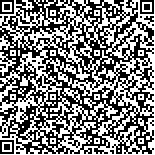| 摘要: |
| 对肺腺癌自噬相关基因进行生物信息学分析,结合多基因预后标志和临床参数构建能够预测肺腺癌患者预后的模型。首先,对TCGA肺腺癌数据中的938个自噬相关基因进行差异分析,获得了82个差异自噬相关基因,使用单因素Cox比例风险回归模型从差异自噬相关基因中筛选出候选基因,通过 lasso回归进一步筛选出预后相关基因,分别是ARNTL2、NAPSA、ATG9B、CAPN12、MAP1LC3C和KRT81。通过多因素Cox回归分析以构建风险评分模型,根据最优cutoff值将患者分为高低风险组,生存曲线显示高低风险组之间生存差异显著,ROC曲线显示风险评分的预测能力良好,并在内、外验证集中得到验证。同时对传统的临床因素进行单因素和多因素Cox回归分析,结果显示Stage、复发和风险评分能够独立预测预后,结合这三个独立的预后参数以构建列线图模型,使用一致性指数、校准曲线评估列线图的预测能力,结果显示预测结果与实际结果之间具有良好的一致性。通过与Stage和风险评分的比较发现,列线图的预测能力表现最佳。基于肺腺癌相关的自噬基因和临床参数构建了一个列线图模型来预测肺腺癌患者的预后生存,这可能为临床医生提供了一种可靠的预后评估工具。 |
| 关键词: 肺腺癌 自噬基因 列线图 |
| DOI:10.12113/202105009 |
| 分类号:Q7 |
| 文献标识码:A |
| 基金项目:国家自然科学基金项目(No.81830052). |
|
| A prognostic model for lung adenocarcinoma combining autophagy-related gene expression profiles and clinical factors |
|
LI Lixi1, HUANG Gang2
|
|
(1. School of Health Science and Engineering, University of Shanghai for Science and Technology,Shanghai 200090,China; 2. Shanghai Key Laboratory of Molecular Imaging, Shanghai 201200, China)
|
| Abstract: |
| Bioinformatics analysis of autophagy-related genes in lung adenocarcinoma was performed ,and multi-gene prognostic markers and clinical parameters were combined to construct a model for predicting the prognosis of lung adenocarcinoma patients. Firstly, a differential analysis of 938 autophagy-related genes from TCGA lung adenocarcinoma data was conducted,and 82 differential autophagy-related genes were obtained. Candidate genes were screened among differential autophagy-related genes using univariate Cox proportional risk regression model, and prognosis-related genes were further screened by lasso regression, including ARNTL2, NAPSA, ATG9B, CAPN12, MAP1LC3C,and KRT81. Through multivariate Cox regression analysis,a riskscore model was constructed and patients were classified into high and low risk groups based on optimal cutoff values. The survival curve showed significant differences in survival between high risk and low risk groups. The ROC curves showed positive predictive power of riskscore,which was verified in internal and external validation sets. Univariate and multivariate Cox regression analyses were also performed on traditional clinical factors, and results showed that Stage, Recurrence and riskscore could independently predict prognosis. The three independent prognostic parameters were combined to construct a nomogram model, and the predictive ability of the nomogram was assessed using concordance index and calibration curves. Results showed consistently good agreement between predicted and actual results.The nomogram performed best in terms of predictive power compared with Stage and riskscore.The constructed nomogram model can predict prognostic survival of lung adenocarcinoma patients based on autophagy-associated genes and clinical parameters, which may provide clinicians with a reliable tool for prognostic assessment. |
| Key words: Lung adenocarcinoma Autophagy gene Nomogram |






